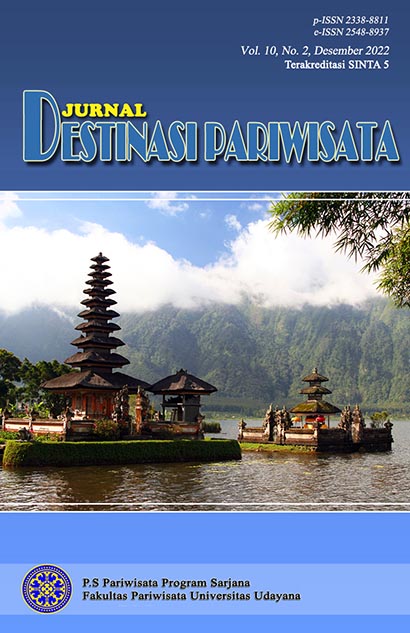Strategi Pemasaran Hotel dalam Masa Pandemi COVID-19 di Kawasan Sanur
Studi Kasus Artotel Hotel
Abstract
Pandemic has devastated the industry and its businesses, including star-rated hotels, causing almost a 50%
decrease in occupancy rates. Now that international borders are being re-opened, a rise in tourism demands
occurred meaning businesses must implement the correct strategy to market and do advertisement in a postpandemic
world. This research aims to address successful marketing strategy to increase occupancy rate for
star-rated hotels in Bali to quickly recover in a post-pandemic world.
This is qualitative research, using observation, interview, and documentation to collect data from ARTOTEL
Sanur as an object for the study case. Marketing Mix and Segmenting, Targeting, and Positioning (STP)
approach are used to identify ARTOTEL Sanur’s marketing strategy. Both primary and secondary data are used
and analyzed through data reduction, data presentation, and verification.
The objectives of this research are to find ARTOTEL’s marketing strategy during the COVID-19 Pandemic,
and their implementation plan for the post-pandemic market. This research found that ARTOTEL Sanur had
implemented effective marketing strategies to survive the COVID-19 pandemic and compete in a post-pandemic
world. The strategy involves compelling and effective social-media marketing through Instagram as ARTOTEL
Sanur’s main channel.
Keywords: Strategy, Marketing, COVID-19 Pandemic, Hotel.
Downloads









